Inside Valeria Napoleone’s Historic, Female-Focused Art Collection
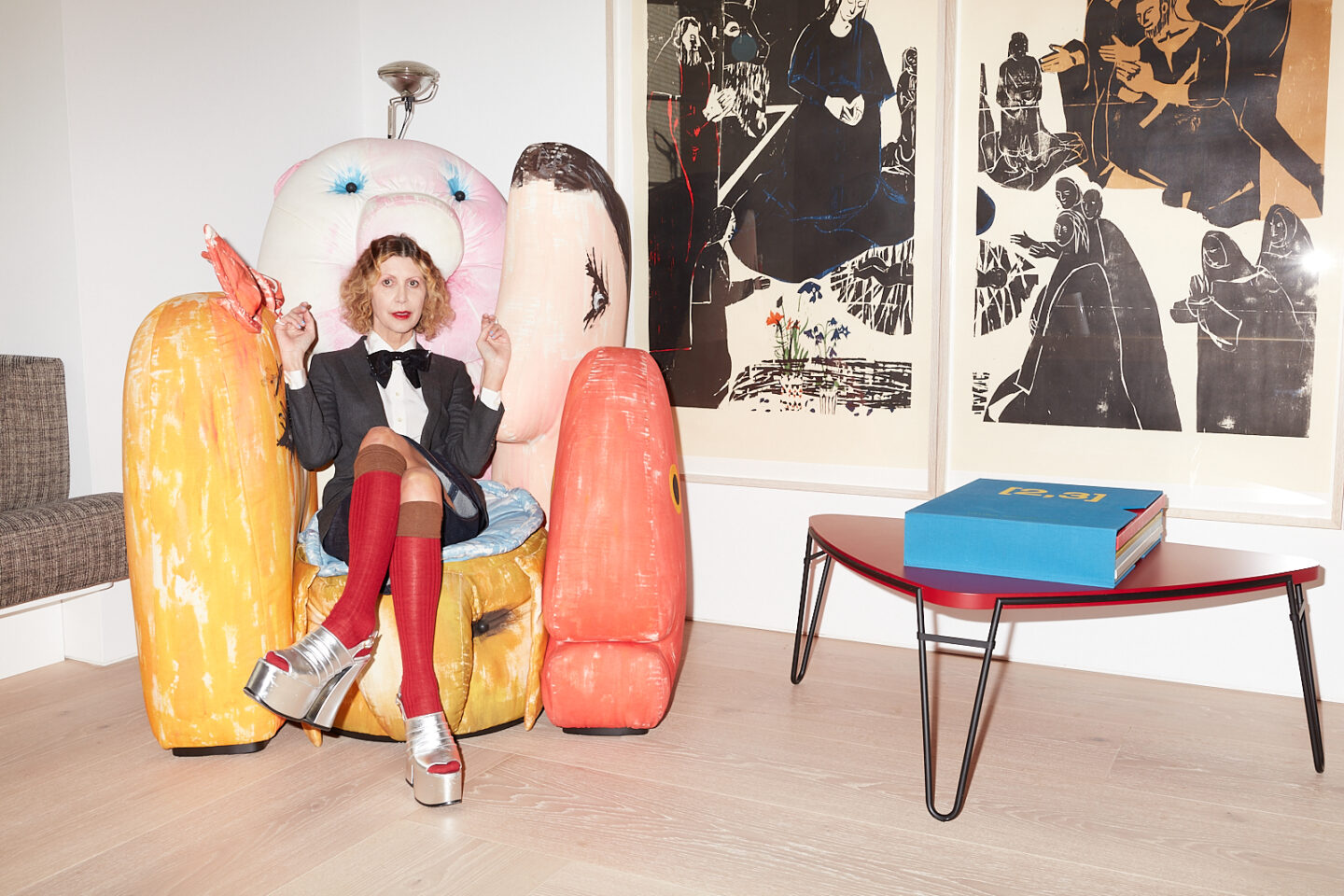

Words: Chris Erik Thomas.
A black-and-white photo by artist Carol Shadford started it all. Presenting as an optical illusion, the photo is abstract when viewed from afar. Step closer, however, and glimpses of a face, half-bust, or full body of a woman can be seen in each individual bubble. For Napoleone, it was fascinating and a worthy first purchase that set off a decades-long commitment to amassing art made exclusively by female artists.
Born to a wealthy Italian industrialist and raised in a small town outside of Milan, the Italian collector wasn’t always attracted to the art world. Studying journalism at NYU in the mid-eighties, her years were spent exploring the city. It wasn’t until she left and married her husband Gregorio, an Italian-born financier, that a path toward the art world began to fall into place. “My husband is in investment banking, so we moved [back] to New York and I started a [master’s degree] program on art gallery administration at the Fashion Institute of Technology,” she recalls. It was this two-year program that helped lead her to Pierogi 2000 (now simply called Pierogi), the Williamsburg gallery that became a hub for a melting pot of both artists and art lovers in the mid-nineties.
“Joe Amrhein was the director and I was spending a lot of time in [Pierogi 2000] meeting artists who were represented and shown,” she recalls. “While navigating and exploring Pierogi and the community of artists, I realized how much I enjoy being surrounded by artists.” It is this foundational urge to be around artists that has helped the collector maintain a steady focus in her work as a patron. Besides her famed private collection of works exclusively made by female artists, Napoleone has also engaged in philanthropic work through her Valeria Napoleone XX platform, which is split into two initiatives: one with New York’s SculptureCenter and NYU’s Institute of Fine Arts and one with the UK-based Contemporary Art Society.
With a private collection of hundreds of artworks plus her philanthropy, Valeria keeps a full schedule, seeking out fresh and established female artists to support. During a recent vacation to Italy, we got on a video call with the collector to talk about her process for finding artists, the XX initiative, and why maintaining a personal connection is key in an era of rapid digitization.
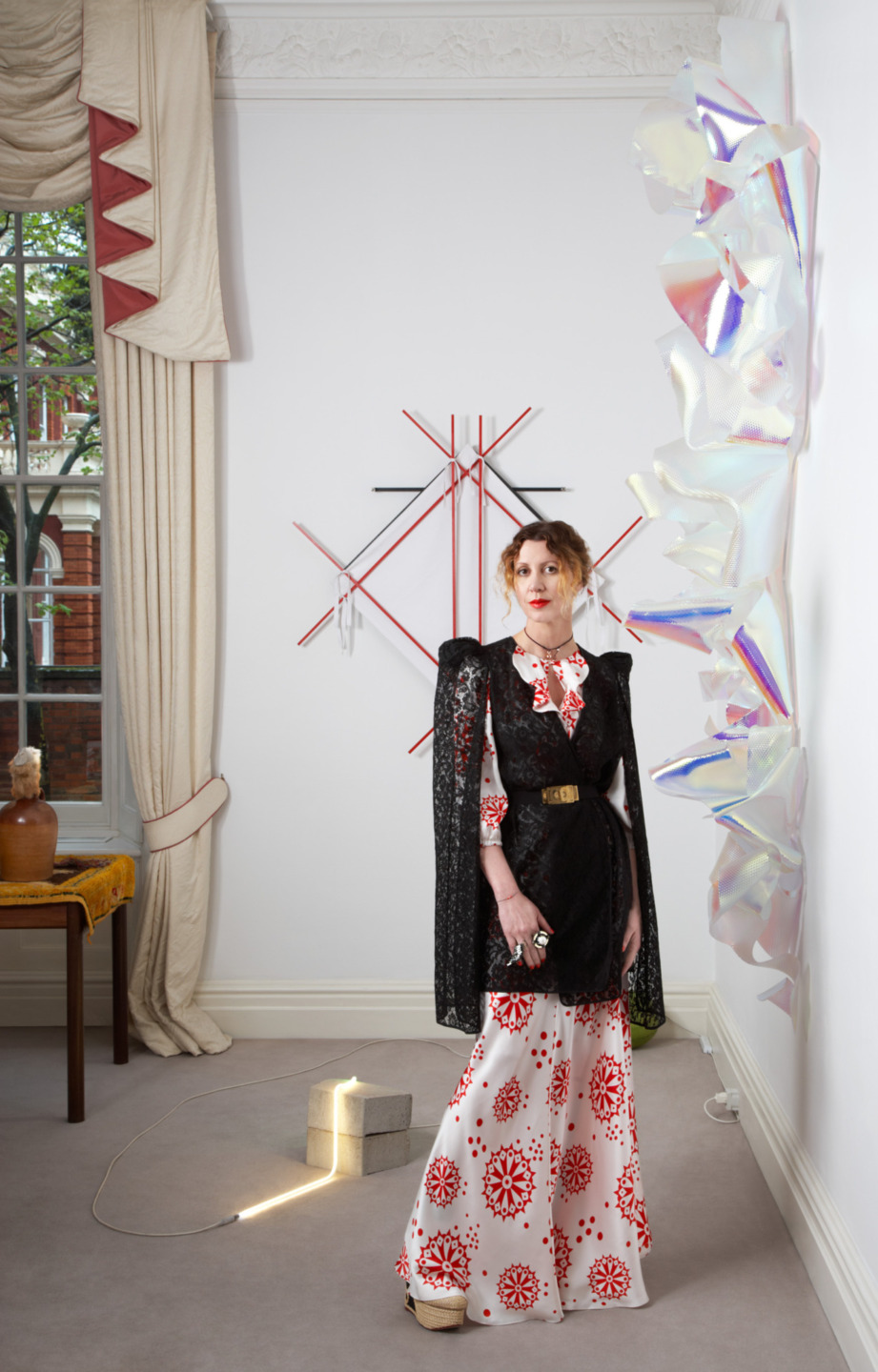
Photo by Phillip Sinden. On the wall: "Figures of Speech (Figure 1)" (2009) by Falke Pisano. On the floor: "Another Soft Stone" (2009) by Nina Canell. On the right: "Hulenays" (2011) by Berta Fischer. Photo courtesy of Valeria Napoleone.
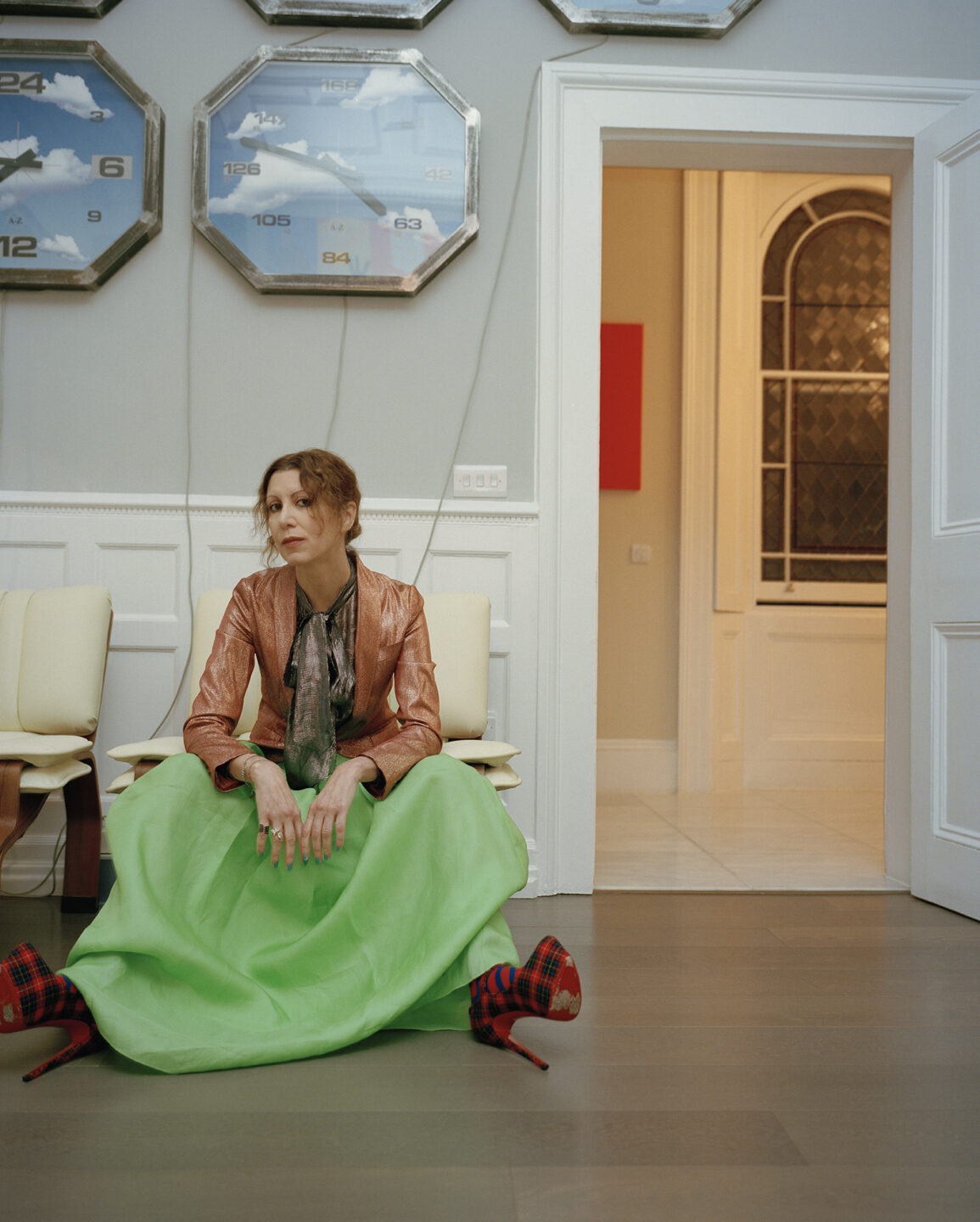
Photo by Mathilde Agius, 2017. Art behind: Andrea Zittel. Photo courtesy of Valeria Napoleone.
Could you talk more about your philanthropic initiative, Valeria Napoleone XX?
The project officially started in 2015, but is a formalization of my activity as a patron for the previous 18 years. I [have always] supported women artists and female creativity, but I wanted to formalize it and scream it out loud. XX [references] female chromosomes but also partnership because my life as a patron and collector has never been a journey alone. It’s a journey with institutions, with curators. Partnership has always been a very important element in my life and XX has many different partners.
In the UK, I work with [the Contemporary Art Society]. For over a hundred years, the organization has been raising private funds to buy artworks and donate to regional museums all over the UK. When I became a trustee, I said, “Let’s do a project that goes beyond my activity as a trustee. Something exciting and more creative.” We started [Valeria Napoleone XX Contemporary Art Society (VN XX CAS)], which gives a donation of a major piece by a contemporary artist to one of the regional museums every year. They need to do an application which asks how many women artists are in their collection and what they’re doing to address this imbalance. It’s this testimony to how little balance there is in the UK. There are no women in regional museums because there is no money to collect [works by female artists].
In the US, XX exists in partnership with the SculptureCenter and fully funds a major commission by an artist in the context of a solo show at the SculptureCenter. Anthea Hamilton was the very first one we commissioned. I really love to be involved in the process. I could give the funds and say, “You choose, you do exactly what you want.” Instead, I see the project, I see the plans, I discuss it with the artist. We have made really ambitious commissions happen with Anthea Hamilton, Carissa Rodriguez, Rindon Johnson, [and] Fiona Connor. We also partner with the Institute of Fine Arts of New York University. XX funds two exhibitions curated by a team of students and of a female artist every year.
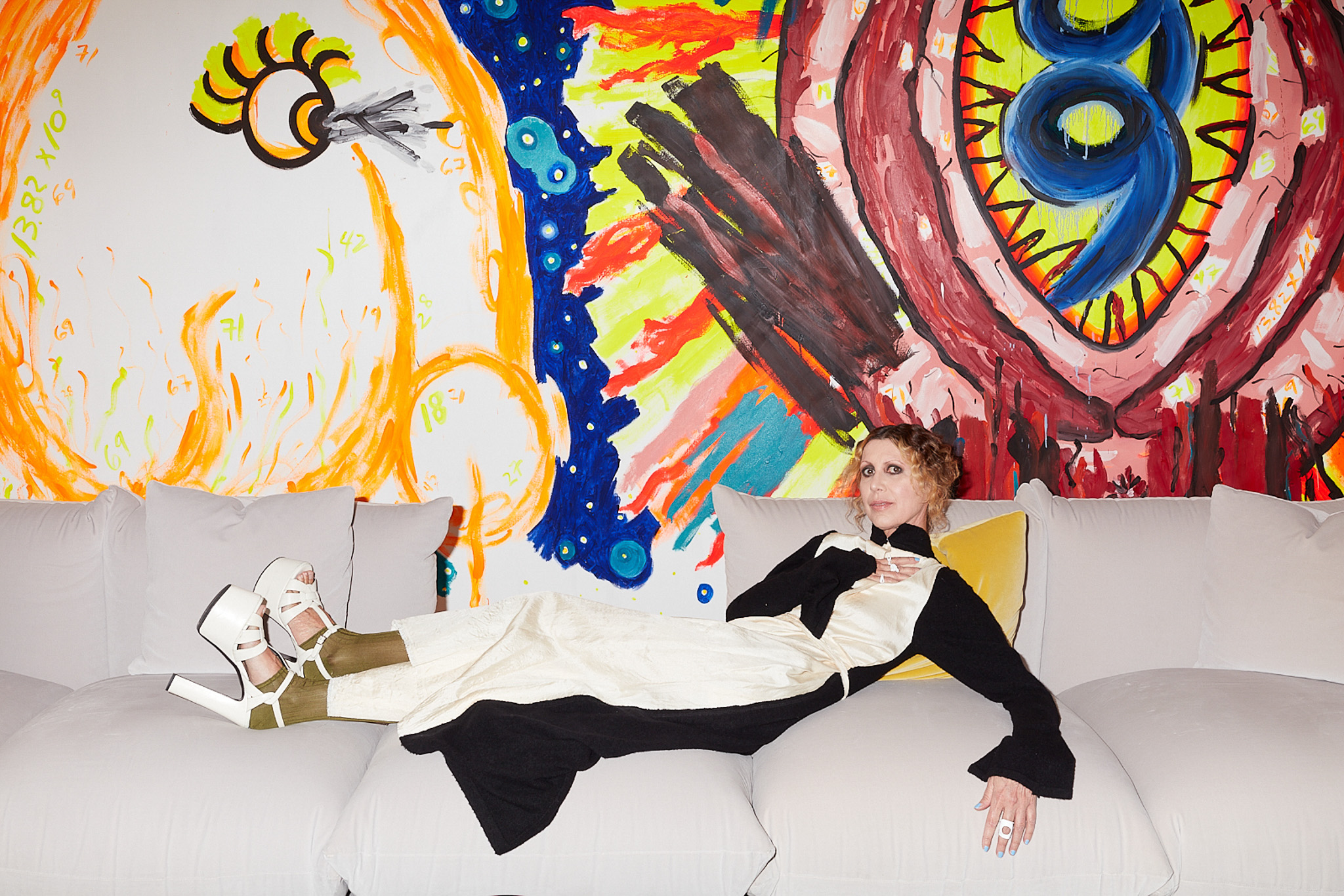
Valeria in front of "Birth of the Universe #33" (2014) by Judith Bernstein. Photo by Federike Helwig. Photo courtesy of Valeria Napoleone.
I’ve read that, unlike many collectors, you don’t have an art advisor.
No. I never use any art advisor or consultant. If there are ever consultants or advisors in my community, it’s artists who highlight or flag other artists, or its gallerists and curators. I have such an active community around me that has been supporting me for 20 years and it’s growing and growing as I navigate the art world and I meet new people. I would never give this up. It’s very [important] for me. The research, the exploration of new ideas, and the surprise of discovering new artists is part of an exciting journey — and I have the time and the energy. Why give up something so special?
This reminds me of the saying: “It’s not about the destination, it’s about the journey.”
Yes, that’s absolutely true. Since the very beginning, I’ve understood how important it is for me to be part of the community. So many journeys with artists start when I see a show and I meet the work. The work is a starting point, but it doesn’t stop there; for many collectors, it stops there. They see the work, they buy it, and that’s it. For me, I see the work and I am really excited and want to learn more. Sometimes I don’t buy right away. I want to wait and understand and possibly meet the artist if it is geographically possible. That really opens up a new journey as a patron.
What are the biggest changes you’ve seen in the art industry since you began collecting?
When I started collecting, I was in the right place at the right time. It was a very small art world. You would go to the Armory Show, which was in [the Gramercy Hotel]. It was one of the most exciting art fairs I navigated. The biggest change is probably technology [and] social media, but also the fact that the contemporary art world has expanded enormously. People collect but, more than collect, they buy art. There is a big difference. When I started my journey, I knew very well the difference between the two of them and I told myself, from the very first piece that I bought, that I’m going to create a collection. I’m a collector. I’m not an occasional art buyer.
It seems that a lot of art now is just about making money and not about having a deeper message.
Everything is about [being] sellable on social media. This is why, more than ever, it’s important for me to meet the artist — to understand if she’s there for the right reason. I see so much speculation into very young artists who do not have the maturity, or they’re not interesting conceptually. They don’t have an interesting story to tell, but they look good on social media. I’m looking for authenticity and there is little of that nowadays.
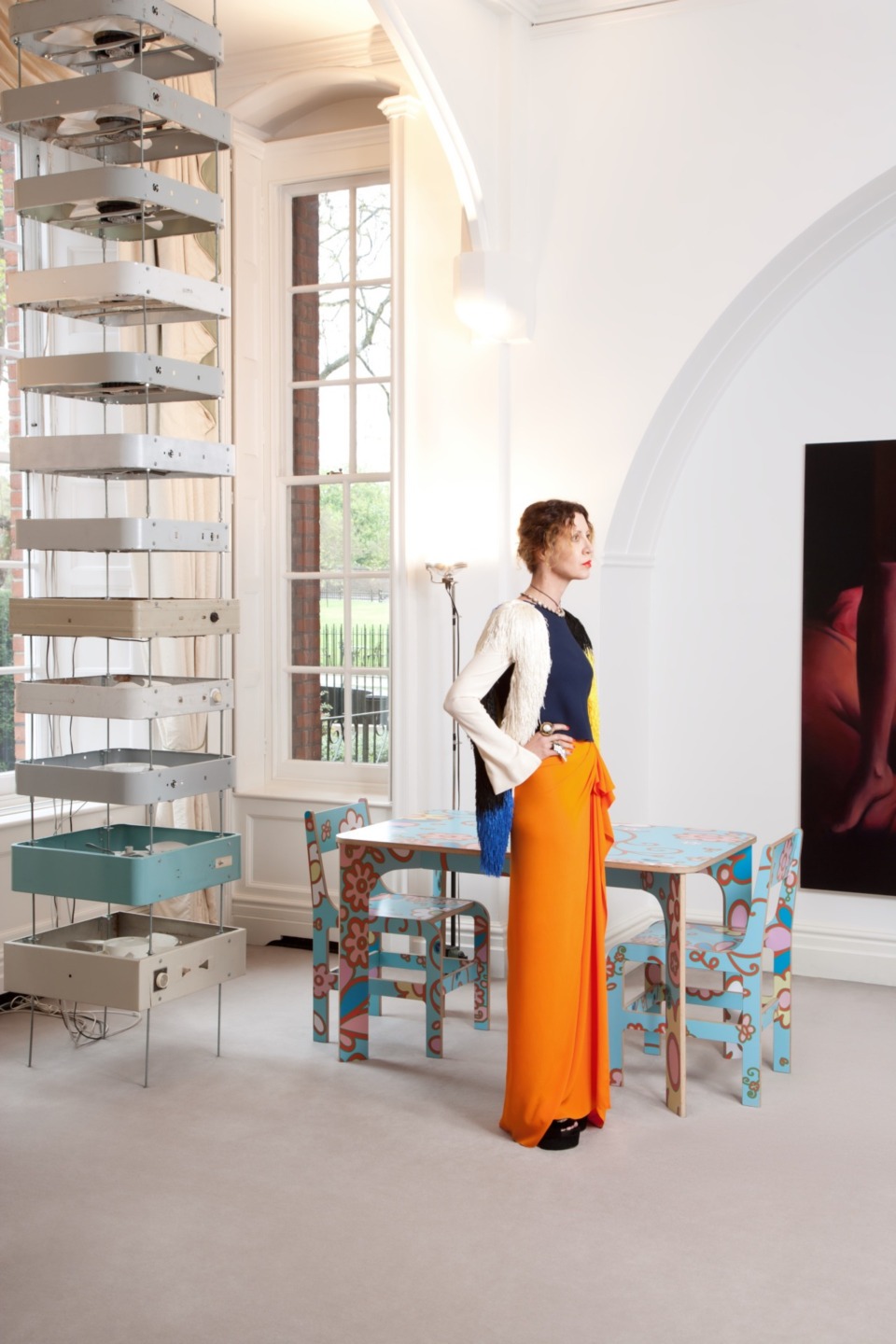
Photo by Philip Sinden. From the left: Nina Canell, Lily van der Stokker, and Lisa Yuskavage. Photo courtesy of Valeria Napoleone.
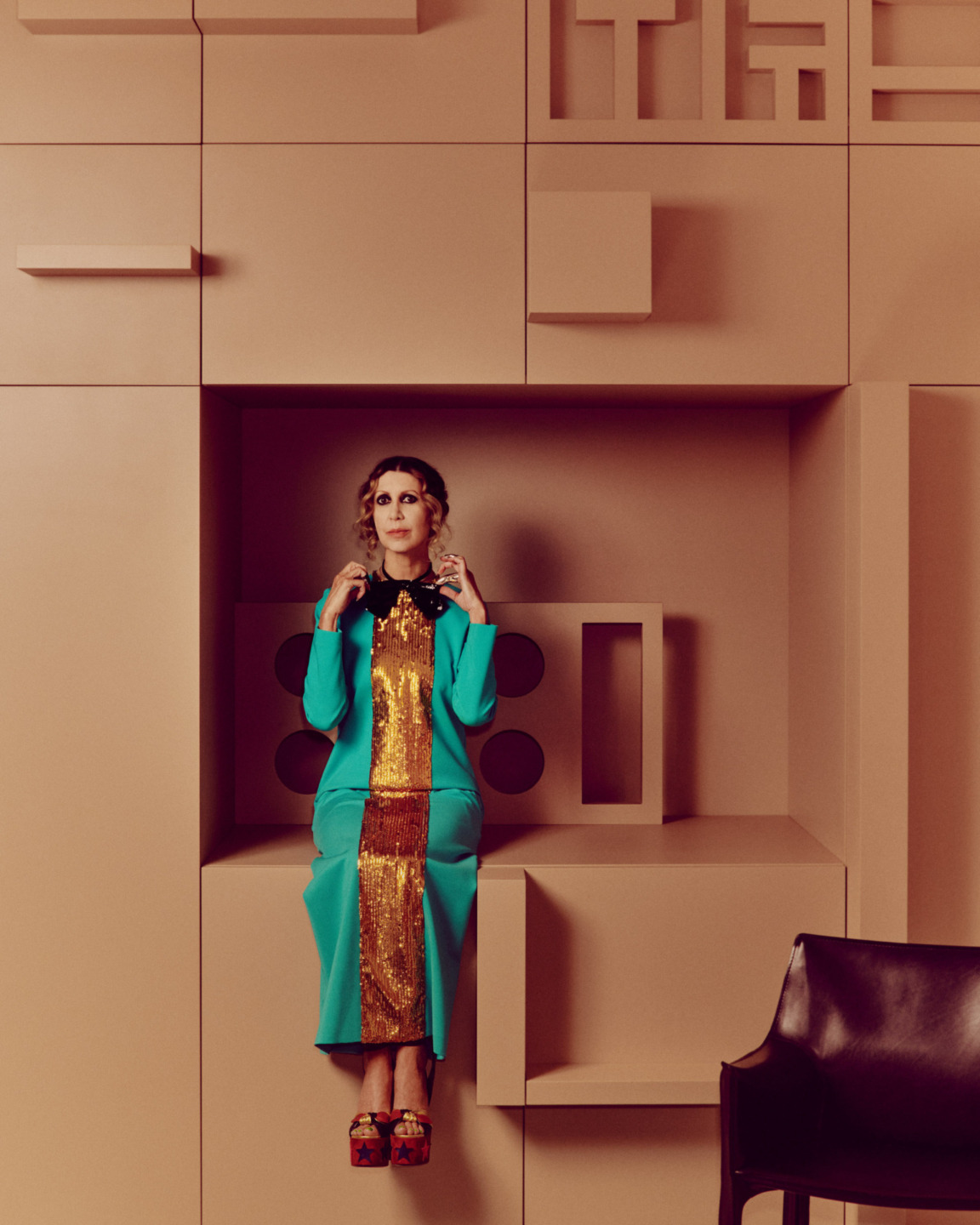
Photo by: Michael Sinclair. Nathalie du Pasquier cabinet, commissioned by Valeria Napoleone. Photo courtesy of Valeria Napoleone.
Do you have a favorite piece of art in your collection?
It’s very difficult to say because I don’t collect in bulk. I collect very specifically what I want, so every piece counts in [feeding] this choir of female voices. The pieces I’m very attached to are the pieces that I bought at the beginning of my journey in 1997, ‘98, and ‘99. I go back to them because they remind me of family pictures of the best moments in my life. They always remind me of an incredible discovery that totally changed the way I look at the world. We’re talking about Margherita Manzelli, Ghada Amer, Lisa Yuskavage, Shirin Neshat, Andrea Zittel. These are all artists that are very important in the collection. They set the tone.
Do you have any advice for people who might want to get into art collecting but feel there’s a financial barrier to entering?
I started a collection with very little budget. You could buy a major piece of art for $4,000 back then. Now the entry price of a piece from a young artist is $40,000. It’s absurd and it can go into triple digits. So, I would say — and I say to all my friends who want to start collecting — take your time. [Spend] at least one year navigating the art world. Go see shows in the right places, meaning in the galleries, commercial galleries, museums, not-for-profit organizations, and art fairs. Use them as a tool, but don’t buy. Just research within yourself what you like.
If you want to become a private collector, by definition, it’s about your taste. It’s not about ticking the boxes, but many collectors do this. They tick the boxes. They need to have the latest names. But I believe that a private collection is about your own taste. Understand what moves you and what excites you and then set yourself a budget. I always have a budget. Of course, this has grown over the years not just [because of] my possibility to invest more, but also because the entry-level price for emerging artists has gone up. I still keep a cap on how much I spend on a single work. Also, I buy artists who nobody looks at at the moment. I support artists that are not on everybody’s list and not on everybody’s lips.
Do you want to say what the cap is?
It’s grown a little bit, but for me, the cap is $70,000-$80,000. That’s cap. But for so many years, it was $40,000. It’s grown because now I prefer to buy less, but to also buy [from] artists who are 50, 55, 60 years old; artists that I’ve known all my life but I never got the chance to buy their work. Instead of buying two artworks, I buy one major piece by these artists — and I generally only buy pieces that contribute massively to contemporary discourse.
In terms of your legacy, have you ever considered opening a gallery or museum to showcase your collection?
This is a question I’ve been asked for 25 years and I always say that I see so much need to support institutions. Now more than ever. Even though there is massive attention given to contemporary art, there are very [few] patrons so institutions need the money. My collection is exhibited in my homes. I have a place in New York, a place in London, and I soon have a place in Milan where the collection will be exhibited. They are open to visits from museums and patrons and groups that come by appointment. Eventually, I will have a bigger space, but I’m not interested in building a museum for the collection at the moment. I like the partnerships with museums and smaller institutions. I don’t function [well] with big institutions where you lose personal connections. My journey has always been about personal connections. I want to keep it personal.
Chris Erik Thomas is the Digital Editor of Art Düsseldorf. They work as a freelance writer and editor in Berlin and focus primarily on culture, art, and media. Their work can also be seen in Highsnobiety, The Face Magazine, and other publications.